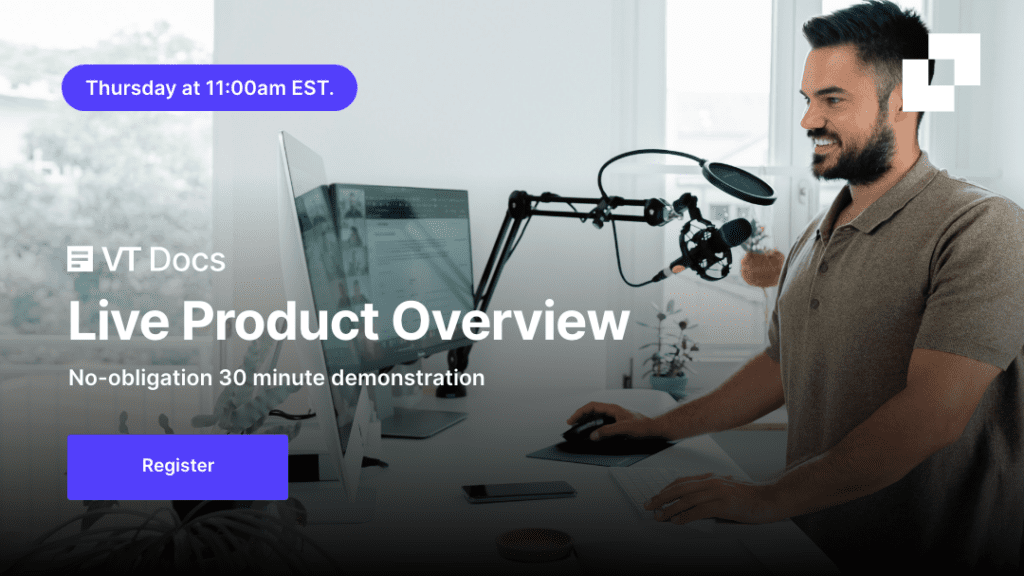The proposal writing process takes considerable time and effort. Key tasks can often add hours and days to the process. But what if you could manage tasks automatically, with the click of a button? This is where using RFP automation software is making an impact. It is turbocharging the proposal process, freeing up proposal teams to boost their win rates with compelling responses.
Automating business processes has become pervasive. Global organizations are recognizing the value of automating certain business processes. In 2020, 31% of businesses said they had fully automated at least one business function. Sixty-six percent said they are trialing solutions to automate at least one business process.
Automation involves using digital platforms and technology like Artificial Intelligence (AI) built into software. The technology takes over routine tasks, reducing the time it takes to complete them. It streamlines processes and helps organizations to become more efficient and agile. It also frees up employees who manually completed these tasks to focus on adding value.
RFP Response Process is ripe for automation
Any organization that responds to government contracts will know how time-consuming the proposal process can be. Writing a proposal can take anywhere from days to weeks. Twenty-three percent of organizations say it can take 1-2 weeks to turn around responses, while 15% said it takes about 2-4 weeks. Around 10% of organizations say it can take over a month to complete and submit their proposal. Of course, every organization (and proposal team) is different, as is every proposal. But one thing that organizations agree on is that the process requires a good deal of time and manpower.
“10% of organizations say it can take over a month to complete and submit their proposal”
While each proposal will be different, a good deal of content will be similar across each document. And teams will also use similar processes each time to search for and curate specific content and responses. This makes the proposal process ideal for automation.
What are the main RFP response challenges?
The proposal process is rife with challenges, from finding key pieces of information to complying with strict requirements.
- Scrutinizing existing RFPs for appropriate responses. This time-consuming task can mean searching through hundreds of completed RFPs and looking for specific references. Without these responses though, an organization’s proposal can lack correct references or could include outdated or irrelevant data.
- Finding the right data and Subject Matter Experts (SMEs). Proposals are all different and some will require specific technical information. The right SME can be the difference between a strong and weak response. The trick is to find the right SME, particularly in large organizations.
- Complying with government regulations. Ensuring a proposal adheres to the necessary regulations is key to a successful response. But some RFPs can be hundreds of pages long and scanning these pages manually can open the door to error. One missed regulation will see an organization’s proposal cast aside.
- Meeting all outlined requirements. Once an organization has gathered the necessary information it’s time to put it all together. Teams can make simple mistakes at this stage, particularly if an organization is working to a tight deadline. Creating a requirements traceability matrix can help track all of the requirements and deliverables. If a government contractor has outlined key specifications such as page count, file types, document size and format, it’s crucial that an organization meets these requirements also. Large teams, working on significant proposals, can sometimes miss these basics.
- Being consistent. After all the hard work, it’s important that each proposal reflects the professionalism of your team. With so many people working on an RFP, consistency with tone of voice, acronyms, punctuation and grammar can often be overlooked. Ensuring the proposal is concise, reads well, and has a natural consistency can be a challenge.
What is RFP software?
RFP software, or RFP automation software, essentially streamlines the RFP response process. It’s a digital platform that centralizes and automates an organization’s RFP response. Crucially, it makes the process more efficient by automating manual, repetitive tasks that take up valuable time.
The best RFP proposal software will handle multiple tasks automatically. Shredding RFPs, generating a responsibility matrix, identifying win themes, creating a compliance matrix, highlighting FARs and DFARs, and extracting acronyms, can all be automated. RFP software can manage these time-intensive tasks, freeing up the proposal team to focus on creating a compelling proposal.
“Crucially, it makes the process more efficient by automating manual, repetitive tasks that take up valuable time”
What are the benefits of RFP automation software?
By automating elements of the RFP process organizations can save time and effort. They can also increase efficiency, productivity and accuracy. Best of all, the proposal team can zero in on building a compelling, collaborative and cohesive proposal. They are relieved of time-consuming, manual tasks and have more headspace to be creative and strategic. Here are some of the benefits of RFP response software.
- Increase efficiencies by making quick bid/no bid decisions
- Get started on proposals faster by shredding documents in minutes instead of hours
- Reduce risk by creating a compliance matrix that ensures you don’t miss key clauses
- Aid planning by building a responsibility matrix that makes sure you cover all requirements
- Frees up proposal managers to focus on quality control instead of basic tasks
- Gain time by streamlining the proposal process. You can use this time to respond to more RFPs
- Improve visibility and collaboration with a centralized approach and a single tone of voice
- Improve win rate by focusing on developing a compelling proposal and meeting all requirements
How VT Docs can help to automate the RFP process
The goal of using RFP automation software is to speed up time-consuming, manual tasks. This is where VT Docs shines. With its AI-powered automation platform, it can improve efficiencies across the entire RFP process.
Shredding RFPs to create a compliance matrix
VT Docs dramatically speeds up the shredding process to give you a great starting point for a compliance matrix. Instead of time-heavy copy-pasting of requirements into spreadsheets, you can complete a shred with a simple click of a button.
Create a responsibility matrix
VT Docs creates a dictionary that assigns keywords to relevant teams. It then scans the RFP for these keywords. Within seconds, it automatically generates a Responsibility Matrix. It highlights instances of the keywords broken down by team.
Identify the strongest themes within a document
New Discovery in VT Docs uses AI to group keywords together by theme. This allows you to easily investigate multiple documents and discover misalignment or gaps, without the stress of manually searching. This means you can accurately identify and reinforce these win themes in your response. This in turn increases your chances of winning.
“With its AI-powered automation platform, it can improve efficiencies across the entire RFP process”
Ensure consistent tone with the Readability feature
VT Docs readability analysis checks and scores your proposal for plain language. The analysis goes through the readability of your proposal sentence by sentence. It then flags overly complex paragraphs. This ensures your proposal retains a single tone of voice and writes in plain language.
Identify FARs and DFARs within a contract
VT Docs automatically flags FARs (Federal Acquisition Regulations) and DFARs (Defense Federal Acquisition Regulations). In one test scenario, VT Docs saved 10 hours scanning a 106-page RFP doc, compared to a manual approach. Our technology extracted 672 FAR clauses in just two minutes and flagged the most sensitive ones automatically.
Check and validate acronym use
Using the Extract Acronyms function on the RFP means you can quickly generate a glossary that you can then send to your proposal teams. The software creates a health report for acronyms in your document, with all abbreviations listed in alphabetical order. It also displays a count of likely acronyms, as well as a count of how many are well-defined. This makes it straightforward to see how many problem acronyms there are. Problem acronyms are those that have been used before being defined or those that are undefined.
RFP automation software: revolutionizing the proposal process
RFP automation software can transform the proposal writing process. Sure, it doesn’t focus on the parts of a proposal that make it stand out. But by automating all the time-consuming, labor-intensive tasks, your team can spend more time on finessing the proposal. Let’s be clear, the routine, time-consuming tasks are necessary and can often be the difference between winning and losing a contract. If you don’t meet requirements your proposal is cast aside, no matter how compelling it is.
Knowing that these key tasks are done correctly takes a lot of the stress out of the proposal process. This in turn frees up your team so they can to do their best work. They are more focused on strategy, analysis and creativity, and are not bogged down in repetitive, time-heavy tasks. Time saved on these elements speeds up the proposal process and can allow your organization to respond to more RFPs each year.






